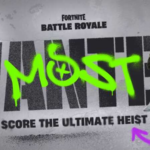Published on: 15/08/2022
DevGAMM conference discusses blockchain gaming potentials, flaws
The DevGAMM conference was held in Lithuania’s capital, Vilnius, on July 28-29. The conference aimed to support talented game developers and industry professionals in the Baltics.
Some prominent speakers at the conference included Alden Kroll and Tom Giardino of Valve’s Steam department, Leszek Szczepański of Guerilla Games, Sergei Savchenko of Bethesda Game Studios and Jason Polansky of Atari.
Andrea Zampedri, a Nordcurrent game producer, said during the conference that the most important factor that game designers should consider when developing their games, whether traditional or blockchain, is the gameplay — which is something most NFT games lack today.
“Gameplay goes always first. Unfortunately, most NFT games are idle games. If the game has good gameplay, there are some ways to make it better,” Zampedri said.
Another important factor that blockchain projects should consider when it comes to developing their games, according to him, is the ideology of the game. This is because the creation of gaming mechanics should be intertwined with the game’s ideology. Without gameplay, blockchains are nothing more than a database system.
He also maintained that despite the various advantages of blockchain technology, it should not be the main factor that game designers consider when developing their games, reiterating his main point that gameplay should be the first thing on the list.
Potentials of blockchain gaming
The popularity of blockchain games has led to the creation of several genres, such as virtual pet RPGs. While the genre’s “catch ’em all” is a fitting metaphor for NFT ideology, the blockchain’s influence isn’t limited to any genre — the technology helps improves a game’s overall experience by allowing players to own in-game characters and items in all genres where blockchain technologies play a key role. Developers can also utilize the technology to create mod projects of existing games, provided the original developers support the integration of the technology into their games.
Aside from improving a game’s overall experience, according to Alex Nichiporchik, the CEO of tinyBuild GAMES during the conference, the games built on blockchain technology are more user-driven — meaning the players hold more power in creating the mechanics instead of the developers.
Of course, the concept isn’t exclusive to blockchain games. One of the best user-driven games today is Minecraft, which Nichiporchik used as an example. He showed a video taken during the alpha phase of Minecraft in 2010, which showed a player accidentally setting their house on fire. It was a shocking incident that the developers didn’t anticipate, but the mechanics remain because of how the communities responded to the incident. In today’s Minecraft, players can burn down houses by pouring lava blocks on lumber blocks or other flammable materials.
It should be noted, however, that such interaction between a developer and the players is relatively rare, and in this regard, blockchain games definitely have an advantage. Due to its decentralized nature, blockchain game communities hold more influence on a game’s development roadmap based on their feedback — being user-centered in a decentralized ecosystem should put blockchain games in a league of their own in terms of building games on community feedback.
Also, among the main advantages of blockchain games and their decentralized nature is their potential interoperability. This allows gamers to create and manage multiple projects within a game, which is helpful for the mod ecosystem as everything that is created, gained, or looted in a game can be easily used in the metaverse of another game.



